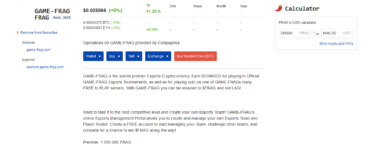Generic proposals may showcase your services, but tailoring them to your shoppers’ specific needs significantly will increase your possibilities of success. Crafting a proposal that speaks directly to your client’s pain points, goals, and aspirations demonstrates your understanding and commitment, setting you apart from the competition. This is your final guide to tailoring proposals to your shoppers’ needs.
Research Thoroughly: Before drafting your proposal, invest time in researching your shopper’s enterprise, trade trends, and challenges they could be facing. Utilize online resources, annual reports, and social media platforms to gather insights. Understanding their pain factors, target audience, and goals lays the foundation for a customized proposal.
Identify Shopper Objectives: Attain out to your shopper to gain clarity on their goals and expectations. Schedule meetings or calls to debate their requirements, preferred outcomes, and any specific features they are looking for. Listen attentively to their feedback and incorporate it into your proposal.
Personalize Your Approach: Start your proposal with a personalized introduction addressing the client by name. Reference previous discussions or interactions to demonstrate your attentiveness. Highlight common goals and values shared between your organization and the shopper to establish rapport.
Address Pain Points: Tailor your proposal to address the particular pain factors or challenges your client is facing. Clearly articulate how your proposed answer can alleviate their considerations and improve their current situation. Use case research or testimonials relevant to their business to validate your claims.
Customise Services: Avoid presenting a one-dimension-fits-all solution. Instead, customise your services to meet the distinctive needs of your client. Break down your choices into modular elements, allowing clients to choose the services that align with their priorities and budget.
Provide Options, Not Just Services: Deal with presenting solutions relatively than merely listing your services. Clearly define how each service or feature addresses a particular need or problem faced by the client. Use language that resonates with their business and enterprise objectives.
Demonstrate Value Proposition: Clearly communicate the worth proposition of your proposal. Highlight the benefits and outcomes your consumer can expect by choosing your services. Quantify results wherever doable to provide tangible proof of the value you deliver to the table.
Visualize Ideas: Incorporate visual elements corresponding to graphs, charts, and infographics to illustrate advanced ideas or data points. Visual aids not only enhance understanding but additionally make your proposal visually appealing and engaging.
Include a Call to Action: Conclude your proposal with a transparent call to motion prompting the shopper to take the next steps. Whether it’s scheduling a observe-up meeting, signing a contract, or requesting further information, make it simple for the consumer to move forward.
Comply with Up Promptly: After submitting your proposal, observe up with the client to address any questions or issues they might have. Demonstrate your responsiveness and willingness to accommodate their needs. Use this opportunity to further customise your proposal based mostly on their feedback.
In conclusion, tailoring proposals to your purchasers’ wants is not just a best follow; it’s a strategic imperative in right now’s competitive business environment. By conducting thorough research, personalizing your approach, and customizing your services, you possibly can create compelling proposals that resonate with your purchasers and improve your possibilities of success. Remember, the key to winning over purchasers lies in demonstrating your understanding of their challenges and providing solutions that address their specific needs.

 by kirkmarko33
by kirkmarko33





